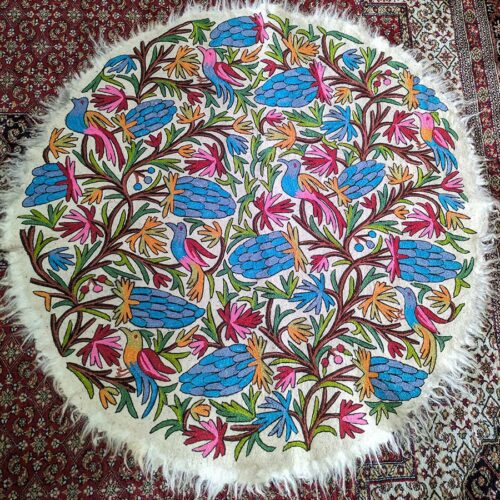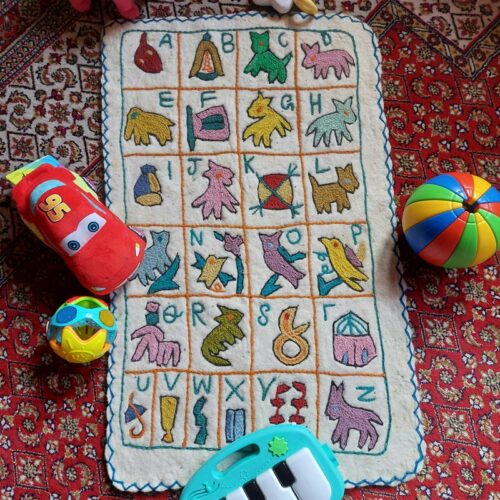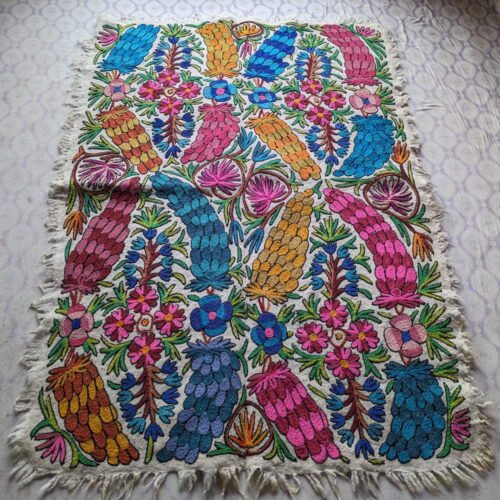Harud Pure Wool Handmade Aari Embroidered 6×4Ft Namda Rug
₹3,499
This is a beautiful large Namda rug of size 6×4 Feet. Its made of pure wool and is handmade. This specific rug is very special due to the “full embroidery” it takes around 4 weeks to create an embroidered felt rug like this.
Out of stock
Namda, a type of felted wool rug, is a traditional craft of Kashmir that has been practiced for centuries. Made from pure sheep wool, Namda is not only beautiful but also functional, providing warmth and comfort to homes and individuals during the chilly winter months. In this article, we’ll explore the process of making Namda, from collecting and preparing the wool to the final embroidery.
Collecting and Cleaning the Wool
The first step in making Namda is collecting and cleaning the wool. The wool comes from sheep that live in the mountain areas of Kashmir, where the harsh weather conditions make their wool especially thick and warm. The wool is collected by shearing the sheep, and then it is cleaned thoroughly to remove any dirt or debris.
Dyeing the Wool
Once the wool is cleaned, it is dyed in a variety of colors. The dyed wool is then separated into flakes and spread evenly on a jute mat, which is made up of at least three layers of dyed and natural wool. The mat is then sprinkled with soap water, which helps the wool fibers stick together.
Rolling and Compressing the Wool
The next step is to roll and compress the wool. The jute mat is tightly rolled and tied up, and then it is compressed by rolling it on the floor with the help of hands and feet for a long time. This process helps the wool fibers fuse together, creating a solid and durable felted rug.
Dry Washing and Embroidery
Once the Namda is ready, it is dry washed by local women to remove any excess dirt or soap residue. Then, it is embroidered by hand using an Aari needle hook. Traditional floral designs are the most common, but geometric and more modern designs are also possible.
| Weight | 5 kg |
|---|




























Reviews
There are no reviews yet